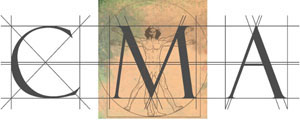The Alexander Technique
The Alexander Technique aims to improve posture so the body can move with as little stress as possible. By increasing body awareness and rectifying bad posture, the body systems function more efficiently.
This article provides general information of what to expect when you visit a teacher, and a general theory behind how their discipline works. It must be noted, however, that every teacher works in an individual way, and may subscribe to slightly different theories on how the discipline works. It is always advised that you ask to see relevant qualifications and discuss the treatment offered to you by the practitioner if you are in any doubt whatsoever.
What is the Alexander Technique?
This Technique is claimed to be a body-orientated therapy as opposed to a complementary therapy. As children, we have perfect posture, but as we grow older we often fall into bad habits, such as slouching while we sit, pushing our abdomen out when we stand, and over using one side of our body. It is believed that the way we hold our body has a direct link to how our mind and body functions. The Alexander Technique teaches us correct body posture.
Main uses
Back pain due to musculoskeletal problems, back pain due to pregnancy, headaches, depression, repetitive strain injury, and breathing problems.
What To Expect When You Visit A Teacher
You will be asked questions relating to your medical history, and what problems you are encountering. You will also be asked questions relating to lifestyle, stress levels, diet, exercise regimes, and sleep patterns. You may be able to find group classes that teach the Alexander Technique, but in the main you will be taught on a one to one basis. You should wear loose, comfortable clothing on each visit, when you will be asked to perform a series of specific movements / exercises. You might be asked to touch your toes, walk or march across the room or on the spot, and various other tests.
How you hold your body while performing all these exercises will indicate to the teacher the areas where your posture could be improved upon. You will then be asked to lie down so that the teacher can adjust your body into a position that is the optimum body posture, ensuring that you know what it feels like to position your body in the best possible way.
You will be taught how to stand-up from a seated position and how to walk once you are standing, with the teacher adjusting your posture as and when necessary. How the body is positioned is often referred to as ‘thought in activity.’ As you lay good foundations on how to hold your body you will be able to build on that knowledge, and in subsequent visits you will learn the optimum body posture for activities like ironing, answering the phone, how to lift objects, and so on. You will need as many visits as is necessary, depending on how quickly you learn and incorporate the ‘new’ posture into your everyday life.
Of course you will have to adopt a whole new way of moving, this Technique is not just something you practise at home twice a week before your next visit, it becomes a whole new way of life. You will have to work very hard to gain good posture as you will have to be consciously aware of what you are doing all the time until you have learned new habits and they become second nature, but it is worth it.
Each session will last between 35-55 minutes. and most people need to have at least 15 sessions, and anywhere up to double that figure depending on how much they put into it and how often they attend sessions. Try to have a session twice a week if you can.
History (In Brief)
Studying himself in the mirror, the Australian actor Frederick Matthias Alexander was trying to find an answer as to why he often lost his voice during performances or at the very best his voice became strained. He realised while staring in the mirror that just before he was about to speak, he pulled his head back down, arched his back, and even tensed his arms and legs. He could even see the muscles in his neck contract and tighten.
It is through correcting these postural problems that Alexander developed the Technique that bears his name. He went on to open a school in London in 1931. Many praised the school, from educationalists, scientists and doctors, and he had a great following with people in the acting profession. It is so popular today that it is often found on the timetable at drama schools worldwide.
How does the Alexander Technique Work?
Practitioners of the Alexander Technique work with individual patients to improve their posture in order to improve their health and to get the best out of the head / spinal support system whatever they are doing. Practitioners will point to the fact that almost everyone began life with a naturally perfect posture. This can be seen in young children who have this natural poise. A healthy child walks and moves with an erect spine, free joints, and with their large head balancing easily on their little neck. But, they point out, most people lose their natural poise and posture over the years, and acquire harmful habits. This can cause specific painful physical problems such as back pain, excess tension or lack of co-ordination. Most people have grown unaware of their physical habits, which can be causing the problem. The Alexander Technique can help to overcome these with basic, natural re-training, making people understand and identify why a pain occurs where it does, and train them to remove the cause of the pain.

